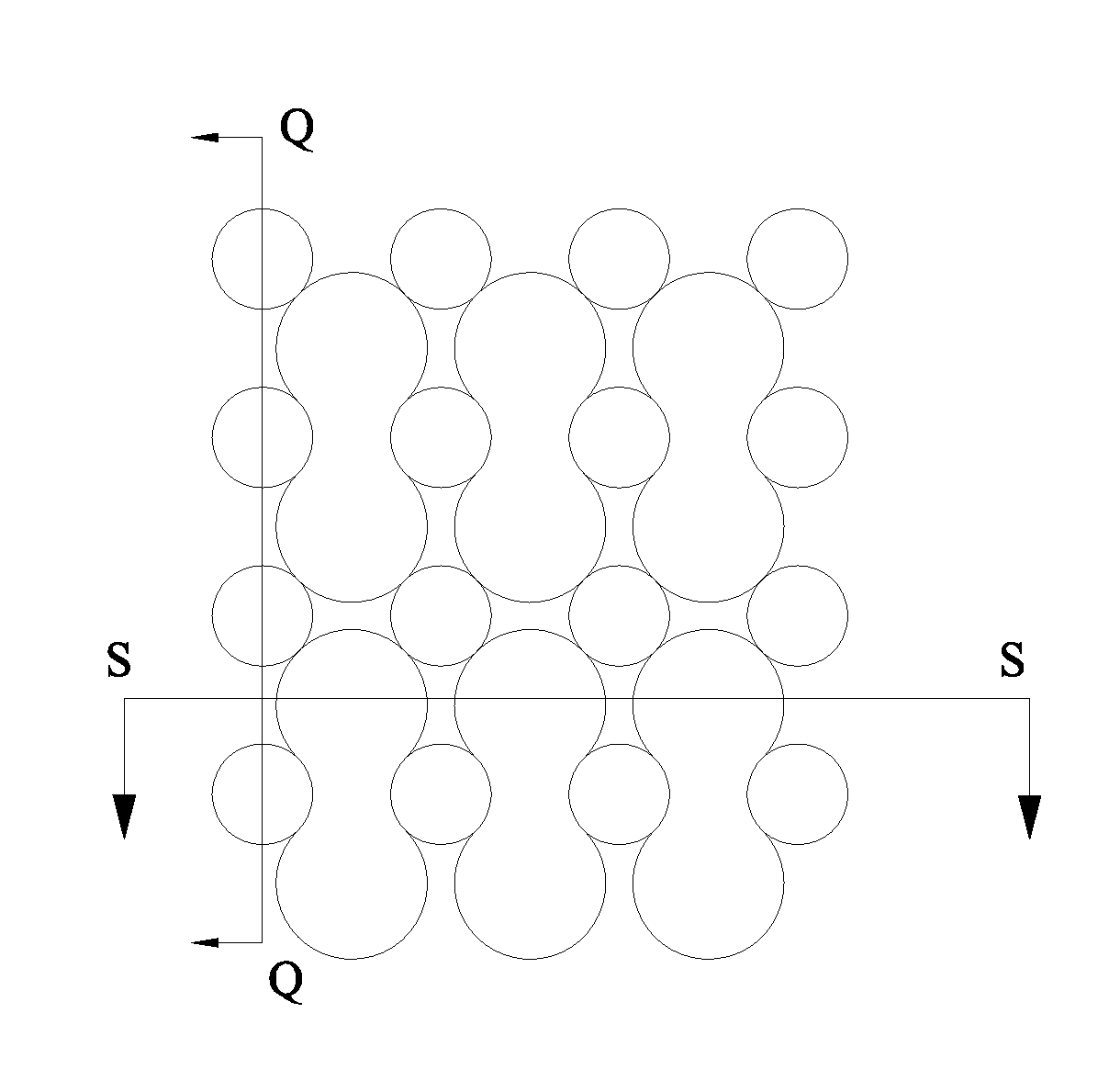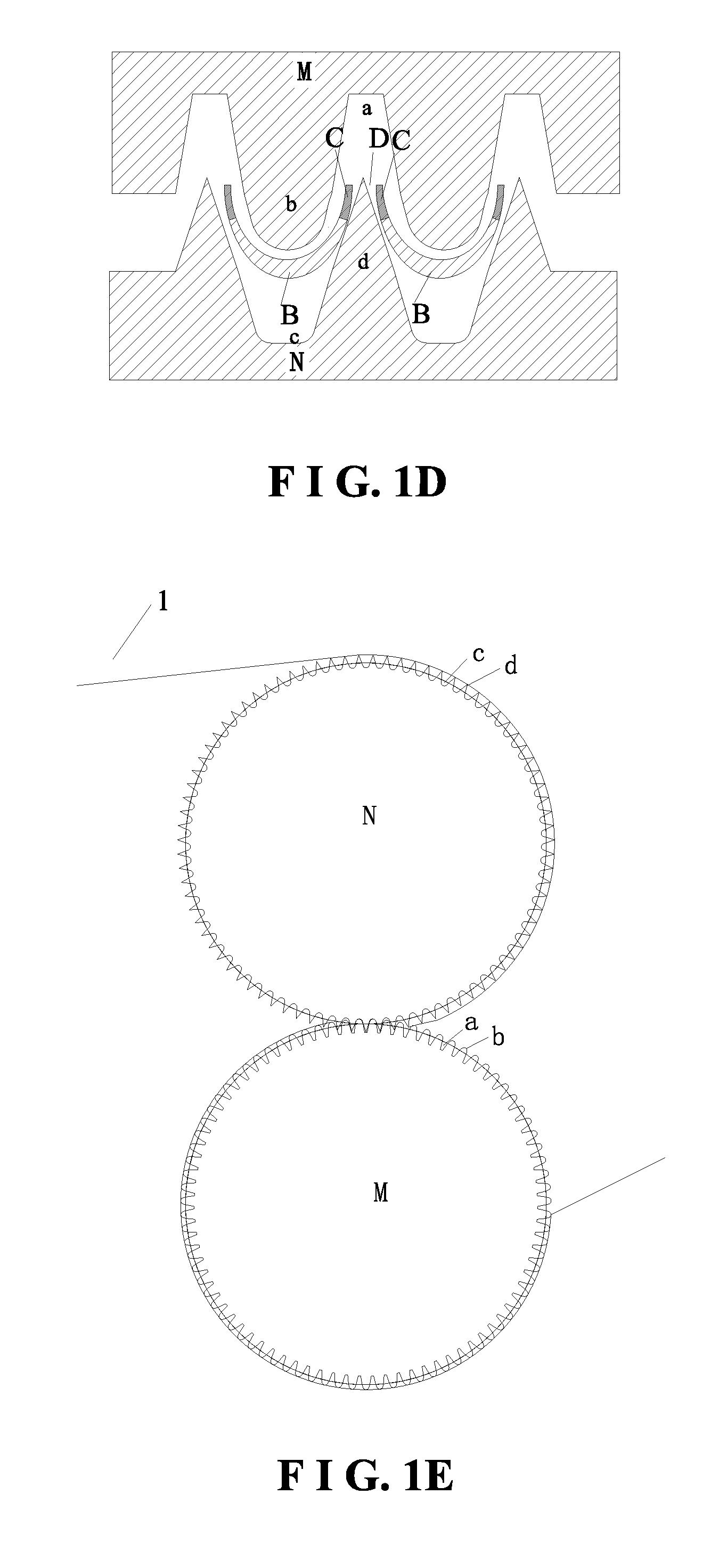Three-dimensional nonwoven fabric with pore structure
a non-woven fabric, three-dimensional technology, applied in the field of non-woven fabrics, can solve the problems of difficult to maintain an obvious lumpy effect, skin redness, eczema and other allergies, and user may feel humid, sticky and wet, etc., to achieve soft and comfortable feel, strong compression ability, and low fiber density
- Summary
- Abstract
- Description
- Claims
- Application Information
AI Technical Summary
Benefits of technology
Problems solved by technology
Method used
Image
Examples
first embodiment
[0064]FIG. 1, FIG. 1A, FIG. 1B, and FIG. 1C illustrate a three-dimensional nonwoven fabric 1 having raised regions and recessed regions with a pore structure. The three-dimensional nonwoven fabric 1 has raised regions B and recessed regions A to be in contact with the user's skin. Seen from the top view, the raised regions B are circular, each like an “island” disposed in the recessed regions A. From the raised regions B to the recessed regions A is uniformly transited. Fiber densities from the raised regions B to the recessed regions A are gradient. The edges transiting from the raised regions B to the recessed regions A, close to the recessed regions A, are defined as C regions. The fiber density of the C regions is 1.5 to 30 times of the fiber density of the raised regions B. Preferably, the fiber density of the C regions is 1.5 to 5 times of the fiber density of the raised regions B. The fiber density of the recessed regions A is 1.5 to 20 times of the fiber density of the raise...
second embodiment
[0075]FIG. 2 illustrates a three-dimensional nonwoven fabric 1 having raised regions and recessed regions with a pore structure. The three-dimensional nonwoven fabric 1 has a surface layer 1A and a bottom layer 1B. The surface layer 1A is a hydrophobic layer and has the raised regions B and recessed regions A to be in contact with the user's skin. Seen from the top view, the raised regions B are circular, each like an “island” disposed in the recessed regions A. From the raised regions B to the recessed regions A is uniformly transited. Fiber densities from the raised regions B to the recessed regions A are gradient. The edges transiting from the raised regions B to the recessed regions A, close to the recessed regions A, are defined as C regions. The fiber density of the C regions is 1.5 to 30 times of the fiber density of the raised regions B. Preferably, the fiber density of the C regions is 1.5 to 5 times of the fiber density of the raised regions B. The fiber density of the rec...
third embodiment
[0076]FIG. 3 illustrates a three-dimensional nonwoven fabric 1 having raised regions and recessed regions with a pore structure. The three-dimensional nonwoven fabric 1 has raised regions B and recessed regions A to be in contact with the user's skin. Seen from the top view, the raised regions B each have a calabash shape, like an “island” disposed in the recessed regions A. From the raised regions B to the recessed regions A is uniformly transited. Fiber densities from the raised regions B to the recessed regions A are gradient. The edges transiting from the raised regions B to the recessed regions A, close to the recessed regions A, are defined as C regions. The fiber density of the C regions is 1.5 to 30 times of the fiber density of the raised regions B. Preferably, the fiber density of the C regions is 2 to 5 times of the fiber density of the raised regions B. The fiber density of the recessed regions A is 1.5 to 20 times of the fiber density of the raised regions B. Preferably...
PUM
 Login to View More
Login to View More Abstract
Description
Claims
Application Information
 Login to View More
Login to View More - R&D
- Intellectual Property
- Life Sciences
- Materials
- Tech Scout
- Unparalleled Data Quality
- Higher Quality Content
- 60% Fewer Hallucinations
Browse by: Latest US Patents, China's latest patents, Technical Efficacy Thesaurus, Application Domain, Technology Topic, Popular Technical Reports.
© 2025 PatSnap. All rights reserved.Legal|Privacy policy|Modern Slavery Act Transparency Statement|Sitemap|About US| Contact US: help@patsnap.com



